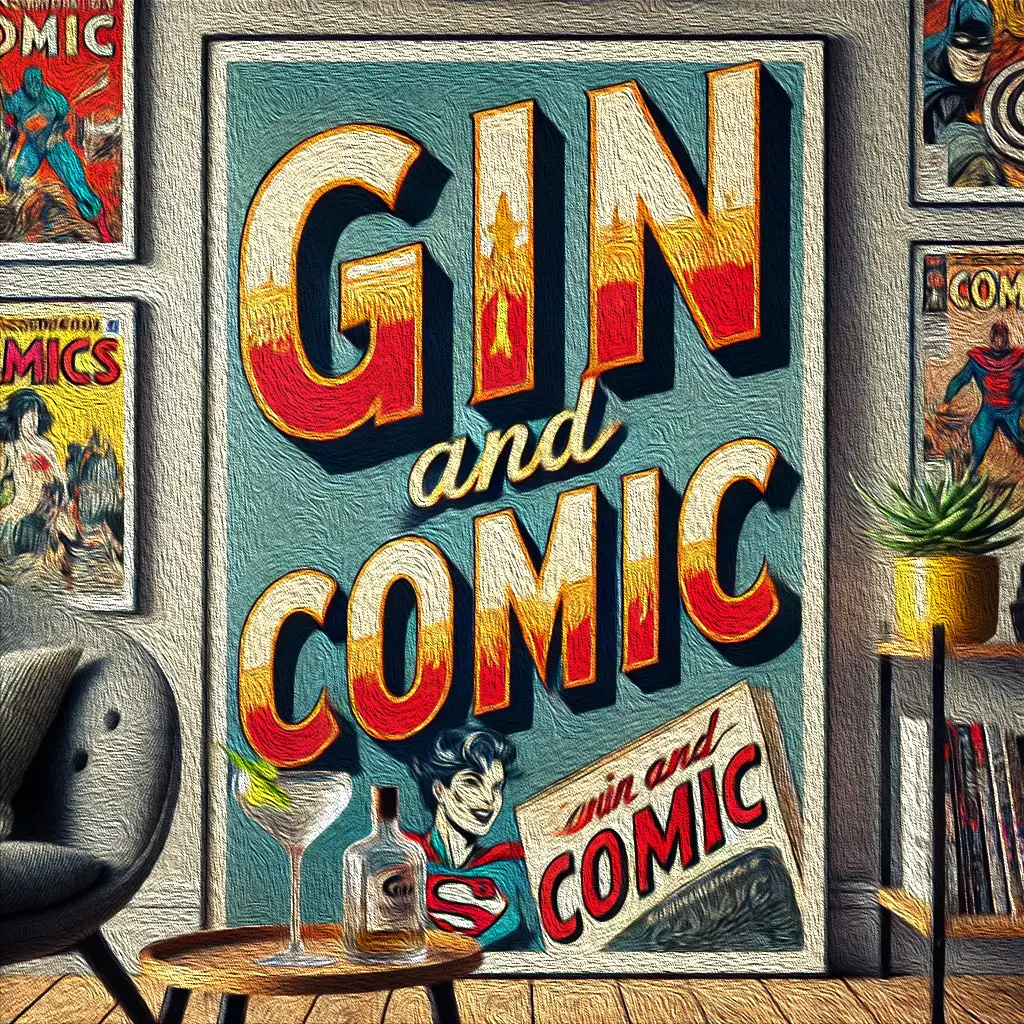Every so often, you come across a work of art that reminds you just how malleable our favorite characters can be. Take Alice from Alice in Wonderland, Dorothy from The Wizard of Oz, and Wendy from Peter Pan—they’re timeless heroines, plucked from the pages of childhood wonder. But put them in the hands of two very different creators, and you’ll get stories that are as distinct as night and day, or perhaps as fantastical as Cheshire Crossing and as hauntingly intimate as Lost Girls.
These graphic novels don’t just reimagine beloved characters—they yank them out of their traditional roles, toss them into brand-new worlds, and ask: What happens when childhood fantasies grow up?
So, pour yourself a glass of Hendrick’s Neptunia Gin, neat, and let’s dive into two very different rabbit holes.
The Lighter Side: Cheshire Crossing

Andy Weir, known for his hard-science blockbuster The Martian, turns his attention to fantasy in Cheshire Crossing. Illustrated by Sarah Andersen, it’s a romp through multiverse chaos that somehow feels like The Avengers meets Wicked.
Here, Alice, Dorothy, and Wendy are teenagers with powers that make Hogwarts alumni look like rookies. Alice can cut through dimensions like a hot knife through butter. Dorothy brings twisters like a Kansas storm chaser, and Wendy? She’s all charm, strategy, and a pinch of fairy dust. Their personalities clash, their worlds collide, and their story unfolds with a breezy, fast-paced humor that keeps you turning pages.
Weir’s approach is playful. These heroines aren’t damsels—they’re team leaders, taking control of their narratives and learning to coexist in a world where flying monkeys and pirates lurk around every corner. The stakes are epic, but the tone is light, almost sitcom-esque.
Think of it as a Saturday morning cartoon with sharp dialogue and a knowing wink to its audience. It’s the kind of story that lets you laugh at the idea of a tea party, even while battling the Wicked Witch of the West.
The Dark Mirror: Lost Girls

And then there’s Alan Moore’s Lost Girls. This is no tea party—it’s an intricate, provocative dissection of sexuality, memory, and fantasy. Illustrated by Melinda Gebbie, Lost Girls transforms these same characters into women who confront the shadows of their childhoods and the complexities of adulthood.
Moore’s Wendy, Dorothy, and Alice meet at a luxurious European hotel on the brink of World War I. Their shared stories are raw, explicit, and deeply personal. Gone is the playful camaraderie of Cheshire Crossing. In its place is a somber reflection on repression, desire, and the ways in which storytelling shapes and distorts our identities.
The fantasy worlds remain, but they’re no longer places of escape. Wonderland becomes a metaphor for addiction, Oz for suppressed memories, and Neverland for yearning. Moore doesn’t just reimagine these characters—he unravels them, layer by layer, until their vulnerabilities are laid bare.
It’s not for the faint of heart, but it’s undeniably powerful. Like a shot of Navy Strength gin, it’s bracing, overwhelming, and lingers long after you’ve finished.
Gin, Comics, and the Art of Reinvention
Where Cheshire Crossing is a party in your backyard, complete with sparklers and laughter, Lost Girls is a dimly lit jazz club where every note feels heavy with meaning. They’re polar opposites, yet they share one essential truth: these stories show us just how far our favorite characters can be stretched.
Weir’s work asks, What if they stayed adventurers? while Moore wonders, What if they grew up, for better or worse? One offers a rollercoaster ride through magical worlds; the other offers a slow, unflinching walk through the corridors of the human psyche.
Both are transformative in their own right, and while they may appeal to wildly different audiences, together they stand as proof of the graphic novel’s ability to adapt, evolve, and surprise.
Last Looks
Pair your Cheshire Crossing read with a refreshing Hendrick’s Gin Fizz—it’s effervescent, bright, and just a little whimsical. Save Lost Girls for a late-night sip of Negroni—it’s bold, bitter, and unforgettable.
Both stories remind us of the power of reinvention, and how even the most familiar characters can surprise us when seen through a different lens. Whether you prefer to follow the yellow brick road or dive headfirst into the looking glass, there’s a tale here for everyone. Just be sure to choose your drink wisely.
Support the Site
If you’re interested in reading Cheshire Crossing or Lost Girls, consider purchasing through our Amazon Associate links below. We receive a small percentage of each purchase, which helps keep our site up and running. It’s a little bit of magic that keeps the lights on—no tornado or pixie dust required. Cheers!
Cheshire Crossing on Amazon
Lost Girls on Amazon
Cheers, to imagination and reinvention.
Read this article and more at August Tales Comics. Your go-to site for trade paperback exchanges and comic book news! Trade. Read. Repeat.
#comics #comicbooks #graphicnovel #graphicnovels #augusttales


